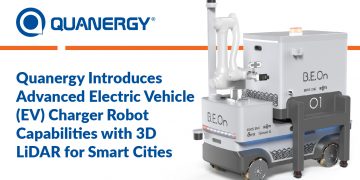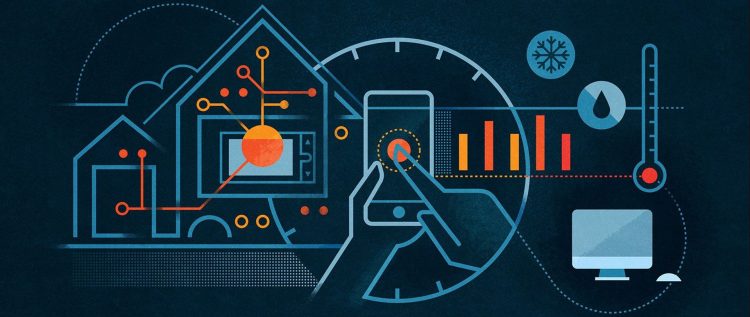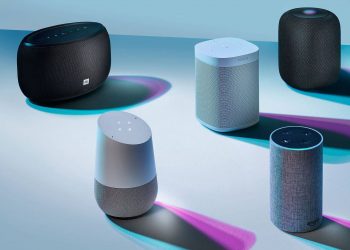Thanks to home automation, your home will not only be more comfortable and safer, but you will also save on electricity and heating costs. Also, with a system for home automation, you can conveniently monitor and control your heating system, lighting, and security technology using your tablet or smartphone via the Internet. Find out now how smart your home can be thanks to home automation!
What is home automation? Home automation refers to the networking of home technology and its control via a central control point. Buildings that are equipped with a system for home automation are referred to as a smart home.
Such solutions aim to automate everyday functional processes and to make the operation and monitoring of individual devices more convenient for house residents. But that is not all! Home automation can also save energy and provide more security.
Home automation for more comfort
Before you can enjoy the convenience of your smart home, you first must install and configure all components. You must program the software of your system with the necessary parameters. It will be used to automatically control the processes in your home in the future.
Like, which radiator thermostat be opened in which room, when should the washing machine be started, or when should the alarm system be activated? Once you have programmed the software, the roller shutter in the bedroom opens automatically at the time you specify, motivational music can play, the coffee machine switches on, and the room temperature in the bathroom increases. Such a sequence of individual actions is referred to in technical jargon as a “scenario.”
Home automation saves energy costs
Heating control, controlled living space ventilation, sun protection, and lighting. If you control and monitor these systems centrally via your home automation system, you can reduce your energy costs smartly by up to 30 percent. At night in a smart home, the heating is regulated down to a low flame, for example, and thus helps to save valuable heating energy. And when the last family member has left home, the home automation system turns off the lights, turns off the sound system, and closes all windows. There are numerous other possible uses in your smart home: Motorized roller shutters, blinds, and awnings are integrable systems, as is the air conditioning system.
A trendy combination is that of windows and heating systems: when a window opens, the thermostat on the radiator is turned off as if by magic. It also makes sense to integrate household appliances such as washing machines and dryers or consumer electronics, which are automatically deactivated when nobody is using them. A detailed visualization helps with the analysis of individual consumer behavior. Energy consumption can even be determined based on a monthly budget.
Home automation brings security
For most victims of burglary, the loss of personal security outweighs the material damage. So far, it does not have to come at all: Home automation products are an adequate and simple solution to deter long fingers! For example, by automatically opening and closing the roller shutters at specified times of the day. This allows the presence of residents to be simulated externally, even though they are away from home.
The lighting, which is automatically activated in the evening and follows a lighting scenario, can also be integrated into the security concept of a smart home. Alarm systems, motion detectors, access control systems, and smoke detectors can also be networked. Automatic alarm forwarding to a private security service is also possible.
Remote control of all devices via the Internet
Quickly open the external blinds on the way when a storm is forecasting? No problem! Remote control via the Internet is most important in-home automation. A prerequisite is the Internet connection in the house, with which all devices get linked via a gateway, a central connection device (router). Many manufacturers provide software for visualization and control.
Browser applications, on the other hand, are device independent. They run on tablet PCs, but also the PC in the internet café. Because the browser always must be loaded, an app is faster. Appropriate apps are available for all common smartphones. With these solutions, the mobile phone becomes a remote control for your home.
Home automation with radio or cable
If you want to treat yourself and your home to intelligent control, you have the choice between a cabling system or a radio-based bus system – a method for data transmission. In a new building, the installation of flush-mounted lines is not a problem; retrofitting in an existing building is already tricky and more complex. Here you can switch to a radio system via which the sensors (command transmitters) and actuators (receivers) communicate with each other wirelessly.
The most common in European and western countries, the only internationally recognized communication standard for home system technology is the KNX installation bus. Regardless of whether it is a cable or WLAN, the information from all devices integrated into the home automation system converges in a central control unit. Sensors distributed around the building transmit their values to the control software, which processes them, converts them into commands, and sends them back to the actuators. The actuators then solve the corresponding control commands in a smart home.
Home automation with manufacturer package solutions
If you want to build a home automation system quickly and inexpensively, then it is best to use products that are offered as a package solution. Various companies have complete systems in their program, with which such a project can be implemented quickly and without too much assembly effort.
The systems from the top home automation companies are particularly noteworthy, the different components of which can be purchased and integrated into the home automation system.
Smart Heating Control
- The networking and control of boilers, heat accumulators and weather sensors as well as solar and ventilation systems offer excellent energy saving potential and is again in comfort for the house residents.
- The smart heating control does not require any special technical skills or a familiarization phase.
- With a app, technicians can carry out a remote diagnosis of the heating system, so that some on-site appointments are no longer necessary.
The trend towards smart home, i.e. the networking of technical household appliances, has long been more than a gimmick because the joint control and data exchange of different devices offer above all a significant energy saving potential.
The smart heating control plays a crucial role here because today, modern heating systems have been equipped with intelligent control for boilers, storage tanks, weather sensors and the connection, for example, with solar systems and ventilation devices.
The smart heating control does not require the user to have any technical knowledge or a familiarization phase. The boiler connects to the intelligent home network or the Internet via its interface module. In this way, both the home PC and the smartphone become a convenient control centre for the entire heat generation using a unique app.
Even from the workplace, individual rooms in the home can be specially adapted to the personal heat requirement after work. And if it should be later with the drive home, the programmed heating periods can be postponed again on the way to avoid unnecessary energy costs. Further savings can be achieved through smart heating control.
Mood Lighting
At work, the phone rings continuously, the desk overflows. When the stressful working day is finally over, there are still a thousand things on the to-do list: the oldest wants to be taken to soccer training, the youngest to be picked up by the ballet, the mother-in-law needs help with shopping, and the lawn would also have to be mowed again. Suddenly the day is over, we fall into bed exhausted, and we are already tired. Time for togetherness? Nothing!
If you can shovel some time off for a romantic evening between work and family life, then the residents of an intelligent home have a clear advantage. Because if the children are safely accommodated with friends, the cell phone is switched off and the organizer is set aside, it is easy to create a feel-good atmosphere.
A romantic dinner in your own four walls offers the ideal opportunity to spoil your partner with culinary delights – and above all to retake time for each other.
The romantic factor depends on the lighting.
So, the first step: provide the right light. Current universal dimmers recognize different lamp types and automatically set the optimal dimming range. Integrated into a lighting control system, the dimmers do even more: once the perfect lighting scenario has been established, a push of a button is all it takes, and dim lighting is already over the room.
All these activities can now be controlled remotely by smart home devices, even with your Apple phone! That is the power of intelligent home automation.
Music at fingertips
Instead of worrying about security in your home, you would alternatively initiate step two for a romantic candlelit dinner and ensure the perfect musical accompaniment. Whether gentle piano music, cool jazz or classic pop ballads, the automation devices can play the music for you.
There are a lot of music libraries online. If you are subscribed member of these, you can arrange in a way that the music plays when the light is on and turns off when the view is off. You can find most of this DIY stuff online, but it is better to get this installed with the help of a technician.
Everything under control far from home
It was long enough; now it is finally here: the vacation time. So, go ahead, pack your suitcase, give in to your wanderlust and escape from everyday life, ideally for several weeks straight away. But as soon as you start driving, you start to wonder whether the hob is switched off, the garage door is closed or the window to the terrace is not tilted yet? An intelligent home already supports its residents when they go on vacation.
There is the option of setting entire scenarios via the house control – and activating them with just one push of a button. For example, the “vacation” scenario switches off all lights, closes the shutters via the blind controls and lowers the internal temperature.
Make your home weatherproof
If, for example, you learn during your vacation that a storm is imminent in your home region. You can continue to enjoy your ice cream in the vacation sun without any worries because your own home is safe with the “wind and weather protection” scenario.
A weather station with wind and rain sensors then ensures that open windows, for example, are closed in time or the awning is retracted above the garden terrace. Extremely practical, even if you are only on the road for a short time – after all, the weather sometimes changes faster than you think!
Confident protection – fully automatic
When all the lights are out at home, burglars have a supposedly easy game – but here too, the right security technology in the house puts a stop to it. It protects your beloved home by only simulating your presence. In this scenario, the blinds shut down in the evening, and the interior lighting switches on and off automatically. The sporadic blasting of the lawn and the flower beds by the irrigation system signals from a distance that someone is taking care of your house, and that is true.
Should someone get in, motion detectors will immediately notice the intruder and trigger an alarm that can also be reported to the smartphone. In this way, the smart homeowner always knows when something is wrong and can intervene online.
In 2020 and beyond, we can expect more improvements in smart home devices. We might see goggles with the capability to control devices. Keep yourself updated!

for developers and enthusiasts






